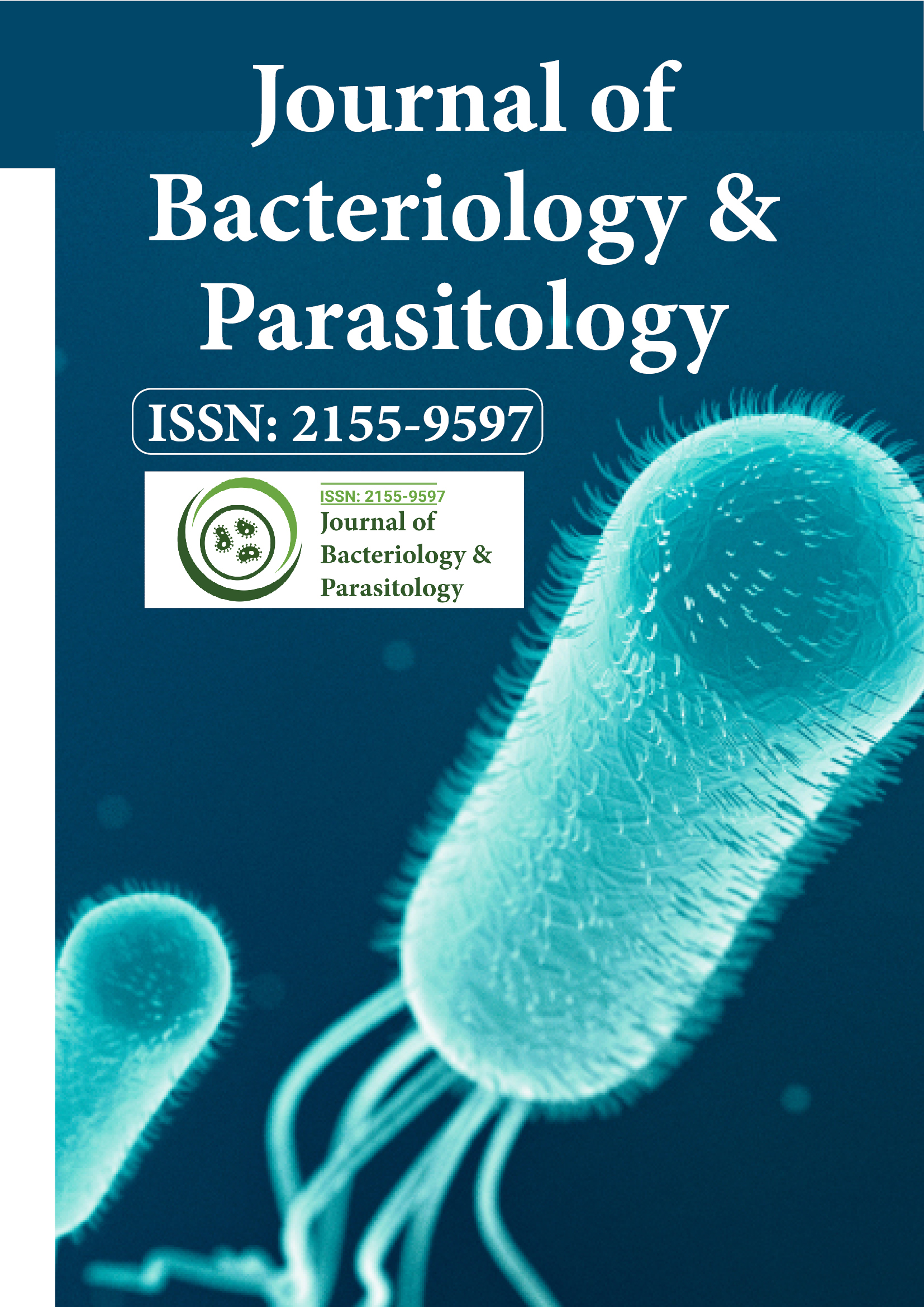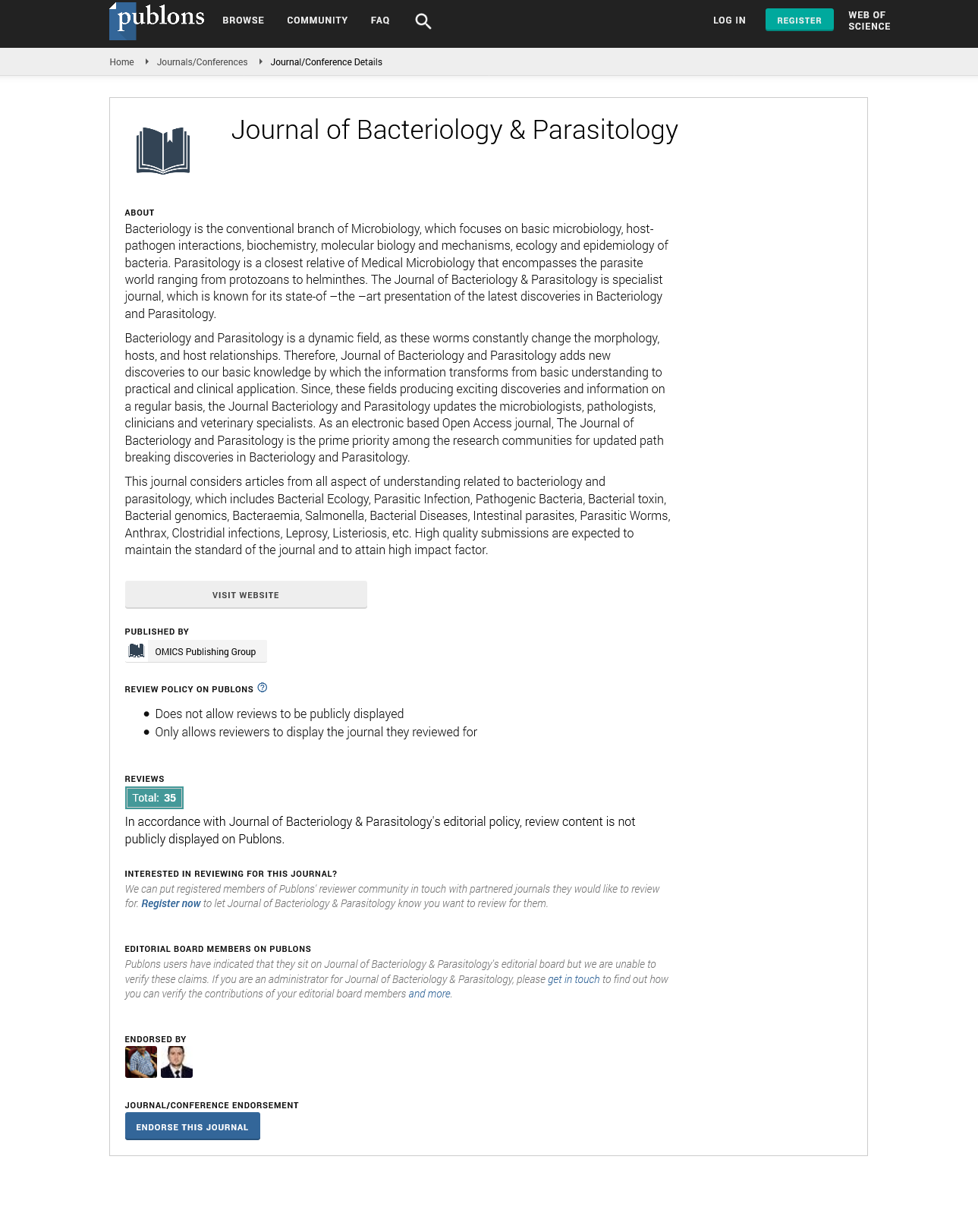Indexed In
- Open J Gate
- Genamics JournalSeek
- Academic Keys
- JournalTOCs
- ResearchBible
- Ulrich's Periodicals Directory
- Access to Global Online Research in Agriculture (AGORA)
- Electronic Journals Library
- RefSeek
- Hamdard University
- EBSCO A-Z
- OCLC- WorldCat
- SWB online catalog
- Virtual Library of Biology (vifabio)
- Publons
- MIAR
- Geneva Foundation for Medical Education and Research
- Euro Pub
- Google Scholar
Useful Links
Share This Page
Journal Flyer

Open Access Journals
- Agri and Aquaculture
- Biochemistry
- Bioinformatics & Systems Biology
- Business & Management
- Chemistry
- Clinical Sciences
- Engineering
- Food & Nutrition
- General Science
- Genetics & Molecular Biology
- Immunology & Microbiology
- Medical Sciences
- Neuroscience & Psychology
- Nursing & Health Care
- Pharmaceutical Sciences
Commentary - (2025) Volume 16, Issue 3
Bacterial Infections Transmitted by Ticks: Ecology, Disease Mechanisms and Emerging Risks
Helena Gruber*Received: 26-May-2025, Manuscript No. JBP-25-30038; Editor assigned: 28-May-2025, Pre QC No. JBP-25-30038; Reviewed: 11-Jun-2025, QC No. JBP-25-30038; Revised: 18-Jun-2025, Manuscript No. JBP-25-30038; Published: 25-Jun-2025, DOI: 10.35248/2155-9597.25.16.545
Description
Tick borne bacterial infections represent a growing public health concern across temperate and tropical regions. These infections are caused by bacterial species transmitted through the bites of hard or soft ticks. The ecological complexity of these organisms, their ability to infect a variety of hosts, and the difficulties in diagnosis make them especially challenging.
Notable bacterial species transmitted by ticks include Borrelia burgdorferi (causative agent of Lyme disease), Rickettsia rickettsii (Rocky Mountain spotted fever), Anaplasma phagocytophilum (anaplasmosis), and Ehrlichia chaffeensis (ehrlichiosis). Each pathogen displays a unique life cycle involving a tick vector and vertebrate reservoir. Human infection is often incidental, occurring when people enter tick-infested habitats.
Ecological drivers such as climate change, urban encroachment into wild areas, and changes in animal populations have contributed to the increased incidence and geographic range of these infections. Warmer temperatures allow ticks to remain active longer and expand into new areas. For instance, Ixodes scapularis, the primary vector for Lyme disease in North America, has shown significant northward expansion in recent decades.
The pathogenesis of tick-borne bacterial infections depends on multiple virulence mechanisms. Borrelia burgdorferi for example uses outer surface proteins to bind to host cells and evade immune detection. It spreads through connective tissue and may cause long-lasting symptoms, even after initial treatment. Rickettsia species invade endothelial cells lining blood vessels, causing inflammation and vascular damage. This leads to characteristic rashes, fever, and in severe cases, multi-organ dysfunction.
Clinical symptoms are often nonspecific in the early stages fever, malaise, myalgia, and headaches. As the infection progresses, more distinctive features may emerge such as erythema migrans (a hallmark of Lyme disease), petechial rash in spotted fever group rickettsioses, or hematological abnormalities in ehrlichiosis and anaplasmosis. These variable presentations make clinical diagnosis challenging, especially in areas where awareness is low.
Accurate laboratory diagnosis relies on a combination of serology, molecular assays, and sometimes culture. Polymerase Chain Reaction (PCR) techniques are increasingly used to detect bacterial DNA in blood or tissue samples, providing rapid results. Serologic tests, though more widely available, may show false negatives early in infection or cross-reactivity between species. Treatment usually involves antibiotics such as doxycycline, which is effective against most tick-borne bacterial pathogens. Early initiation of treatment significantly reduces complications and shortens disease duration. In pregnant women or young children, alternative antibiotics may be used.
One of the emerging threats is the co-transmission of multiple pathogens by a single tick bite. In some regions, ticks are known to harbor both Borrelia and Anaplasma, or Ehrlichia and Rickettsia, complicating diagnosis and treatment. Coinfections can worsen symptoms or prolong recovery. Additionally, novel bacterial species such as Borrelia miyamotoi and Rickettsia parkeri have been discovered in recent years, underscoring the importance of continued surveillance.
Conclusion
Tick borne bacterial infections are increasing in incidence and complexity. Continued research into vector ecology, improved diagnostic tools, and public education campaigns are essential to reduce their impact. Public health interventions must focus on education, early diagnosis, and vector control. Surveillance programs to monitor tick populations and pathogen prevalence can inform risk assessments. Veterinary health also plays a role, as domestic animals may act as hosts and bring ticks into contact with humans. Preventive measures include avoiding tick habitats, wearing protective clothing, using repellents like permethrin, and performing tick checks after outdoor activities.
Citation: Gruber H (2025). Bacterial Infections Transmitted by Ticks: Ecology, Disease Mechanisms and Emerging Risks. J Bacteriol Parasitol. 16:545.
Copyright: © 2025 Gruber H. This is an open-access article distributed under the terms of the Creative Commons Attribution License, which permits unrestricted use, distribution and reproduction in any medium, provided the original author and source are credited.

